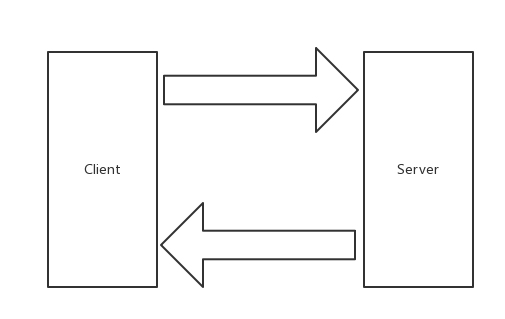4.2 gRPC Client and Server
项目地址:https://github.com/EDDYCJY/go-grpc-example
前言
本章节将使用 Go 来编写 gRPC Server 和 Client,让其互相通讯。在此之上会使用到如下库:
google.golang.org/grpc
github.com/golang/protobuf/protoc-gen-go
安装
gRPC
go get -u google.golang.org/grpcProtocol Buffers v3
wget https://github.com/google/protobuf/releases/download/v3.5.1/protobuf-all-3.5.1.zip
unzip protobuf-all-3.5.1.zip
cd protobuf-3.5.1/
./configure
make
make install检查是否安装成功
若出现以下错误,执行 ldconfig 命名就能解决这问题
Protoc Plugin
安装环境若有问题,可参考我先前的文章 《介绍与环境安装》 内有详细介绍,不再赘述
gRPC
本小节开始正式编写 gRPC 相关的程序,一起上车吧 😄
图示

目录结构
IDL
编写
在 proto 文件夹下的 search.proto 文件中,写入如下内容:
生成
在 proto 文件夹下执行如下命令:
plugins=plugin1+plugin2:指定要加载的子插件列表
我们定义的 proto 文件是涉及了 RPC 服务的,而默认是不会生成 RPC 代码的,因此需要给出 plugins 参数传递给 protoc-gen-go,告诉它,请支持 RPC(这里指定了 gRPC)
--go_out=.:设置 Go 代码输出的目录
该指令会加载 protoc-gen-go 插件达到生成 Go 代码的目的,生成的文件以 .pb.go 为文件后缀
: (冒号)
冒号充当分隔符的作用,后跟所需要的参数集。如果这处不涉及 RPC,命令可简化为:
注:建议你看看两条命令生成的 .pb.go 文件,分别有什么区别
生成后
执行完毕命令后,将得到一个 .pb.go 文件,文件内容如下:
通过阅读这一部分代码,可以知道主要涉及如下方面:
字段名称从小写下划线转换为大写驼峰模式(字段导出)
生成一组 Getters 方法,能便于处理一些空指针取值的情况
ProtoMessage 方法实现 proto.Message 的接口
生成 Rest 方法,便于将 Protobuf 结构体恢复为零值
Repeated 转换为切片
而这一部分代码主要是围绕 fileDescriptor 进行,在这里 fileDescriptor_search_8b45f79ee13ff6a3 表示一个编译后的 proto 文件,而每一个方法都包含 Descriptor 方法,代表着这一个方法在 fileDescriptor 中具体的 Message Field
Server
这一小节将编写 gRPC Server 的基础模板,完成一个方法的调用。对 server.go 写入如下内容:
创建 gRPC Server 对象,你可以理解为它是 Server 端的抽象对象
将 SearchService(其包含需要被调用的服务端接口)注册到 gRPC Server 的内部注册中心。这样可以在接受到请求时,通过内部的服务发现,发现该服务端接口并转接进行逻辑处理
创建 Listen,监听 TCP 端口
gRPC Server 开始 lis.Accept,直到 Stop 或 GracefulStop
Client
接下来编写 gRPC Go Client 的基础模板,打开 client/client.go 文件,写入以下内容:
创建与给定目标(服务端)的连接交互
创建 SearchService 的客户端对象
发送 RPC 请求,等待同步响应,得到回调后返回响应结果
输出响应结果
验证
启动 Server
启动 Client
总结
在本章节,我们对 Protobuf、gRPC Client/Server 分别都进行了介绍。希望你结合文中讲述内容再写一个 Demo 进行深入了解,肯定会更棒 🤔
参考
本系列示例代码
Last updated
Was this helpful?